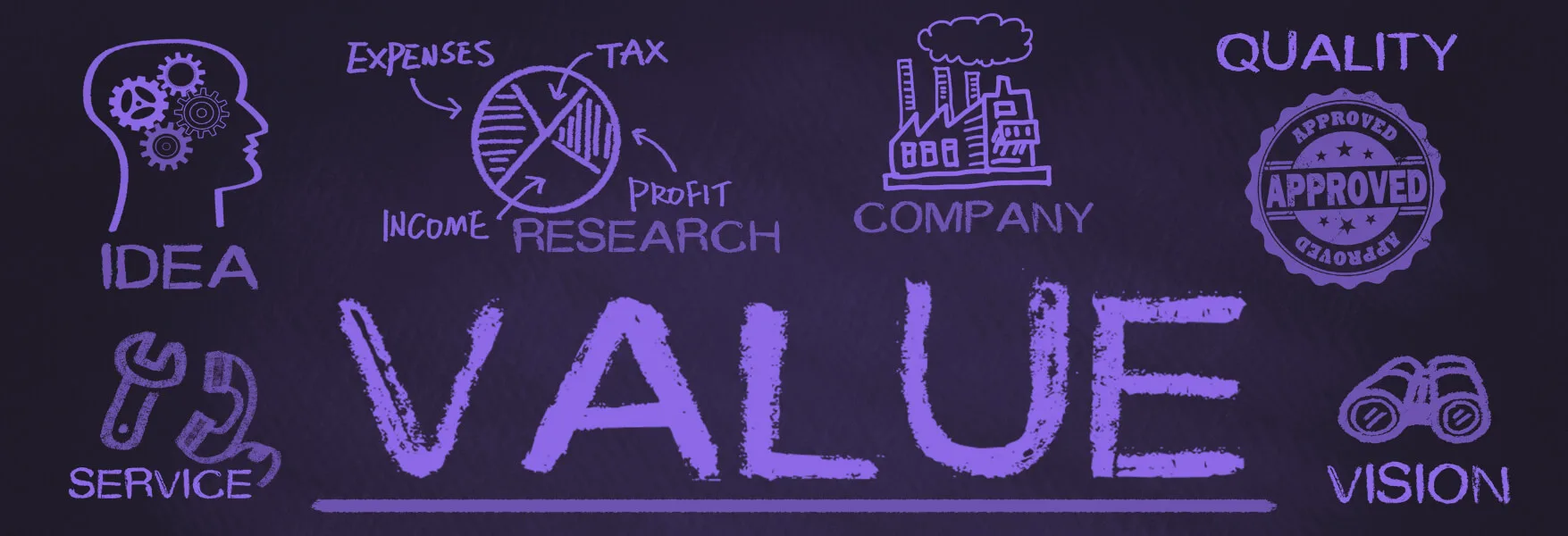
In 2025, value-based care is no longer a concept of the future. It’s here, it’s reshaping the health care system, and it’s producing measurable improvements in both patient outcomes and cost savings. While fee-for-service models have historically rewarded volume over quality, value-based care programs flip the model on its head—prioritizing care delivery that focuses on the health and well-being of the whole person.
So what is value-based care? It’s a health care delivery model where providers are paid based on the quality of care, not the quantity of services rendered. That means better patient care, more efficient care coordination, and lower overall costs. Across the country, examples of value-based care are showing the future of health care: accountable care organizations improving outcomes for complex cases, bundled payments for joint replacements slashing unnecessary costs, and patient-centered medical homes redefining the health care experience.
What makes this shift so impactful is its ability to look beyond traditional health care encounters. Value-based models often incorporate social determinants like housing stability, food access, and transportation, recognizing that these non-medical factors have a powerful influence on outcomes. Providers are also expanding care coordination to include specialty care, ensuring that patients navigating chronic conditions or complex diagnoses receive timely, collaborative, and personalized treatment.
At the heart of it all is a renewed focus on the patient. Instead of reacting to illness, care teams are proactively working with individuals to set and meet long-term health goals—whether that means improving mobility, managing behavioral health needs, or avoiding preventable hospitalizations. Technology plays a key role here, enabling data sharing, predictive analytics, and remote monitoring that keep everyone aligned and engaged.
Let’s explore how value-based care is working in real-time—and why it matters more than ever for providers, care teams, and patients alike.
What Is Value-Based Care and Why It Matters
Value-based care is a reimbursement model that rewards health care providers for improving quality and efficiency in client care. Rather than being paid per visit or treatment, providers share in the savings they generate through better outcomes, lower costs, and patient-centered approaches.

This model addresses some of the most urgent issues in the health care system: rising costs, inconsistent quality of care, and fragmented care delivery. According to the Centers for Medicare & Medicaid Services (CMS), nearly 60% of health care payments are now tied to alternative payment models such as value-based care—a clear signal that the industry is moving away from volume-driven incentives.
By shifting the focus to outcomes, value-based care encourages providers to take a more proactive and preventive approach. That means earlier screenings, regular follow-ups, and care plans tailored to the individual needs of each patient. In turn, this leads to more effective management of chronic conditions such as diabetes, hypertension, and mental health disorders—areas that traditionally strain the system and drive up costs.
Health care organizations embracing value-based models are seeing massive returns: better chronic disease management, enhanced preventive care, and reduced hospital admissions. The result? Improved patient outcomes and cost savings that benefit everyone from the patient to the primary care physician to the health plan.
This shift is also fueling innovation in how care is delivered, from more holistic treatment plans to expanded roles for social workers, nurses, and care coordinators. With a team-based model of care, patients receive more continuous support, bridging gaps that used to fall through the cracks. Telehealth, remote monitoring, and predictive analytics are also being integrated into workflows to improve care access and responsiveness.
The push for improving quality is real—and the numbers show it. Providers aligned with value-based care aren’t just treating illness; they’re creating sustainable, person-centered systems that actually work.
Core Principles Behind Value-Based Care
At the heart of value-based care are principles designed to enhance care delivery and put patients at the center of their own health journey. These aren’t just theoretical ideals—they’re the practical building blocks that define what better care looks like in action. From more personalized outcomes-focused treatment strategies to stronger collaboration across health systems, these principles shape the way care is delivered, measured, and improved.

Patient-Centered Care
Patients are no longer passive recipients of health care. Instead, value-based models embrace patient-centered care, involving individuals in their treatment plans, aligning with their health goals, and improving the overall patient experience. This approach recognizes that patients bring valuable insights into their own health, lifestyle, and preferences—and that care decisions are more effective when they reflect those perspectives. Through shared decision-making, goal-setting, and personalized care plans, providers and patients work together to drive better outcomes. It’s a shift from “What’s the matter?” to “What matters to you?”—and that makes all the difference.
Care Coordination
Integrated care among health care teams ensures that all providers—from the primary care physician to specialty care professionals—are aligned in treatment strategies. Effective care coordination prevents redundant tests, reduces errors, and leads to better health outcomes. In a value-based care environment, coordination isn’t a behind-the-scenes task—it’s a frontline priority. With shared electronic health records, multidisciplinary case reviews, and dedicated care coordinators, patients receive seamless care that bridges gaps and closes the loop between visits. This is especially critical for patients managing complex conditions or navigating multiple providers.
Outcome-Driven Treatment Plans
In value-based care, every progress-driven care plan is crafted to deliver measurable results. By using data-driven strategies, care teams can track progress, make real-time adjustments, and ensure comprehensive care that actually improves outcomes. This outcome orientation encourages providers to focus not just on treatments, but on long-term wellness. Analytics, predictive modeling, and evidence-based guidelines help identify what works—and what doesn’t—so care can continually evolve and improve. Instead of merely reacting to illness, providers proactively manage health, helping patients avoid complications, emergency visits, and hospitalizations.
Patient Experience
Patient satisfaction is a critical metric in determining the success of value-based care programs. Whether it’s reducing wait times, enhancing communication, or offering more holistic services, patient experience is a top priority. In fact, many value-based care contracts now include patient-reported outcome measures (PROMs) and satisfaction scores as part of performance evaluations. This emphasis empowers patients to voice their needs and preferences, and it motivates providers to create more responsive, compassionate care environments. From front desk interactions to follow-up calls, every touch point matters—and every experience counts.
Real-World Value-Based Care Examples
Let’s look at some real-world value-based care scenarios that show how health care systems are evolving. These programs are more than pilot projects—they’re transformative models changing how care is delivered, measured, and rewarded. From innovative payment strategies to holistic care models, each example illustrates how the shift toward value is not only feasible but also effective in providing high quality, patient-first care.
Accountable Care Organizations (ACOs)
ACOs are groups of health care providers who voluntarily coordinate care to improve quality and reduce spend. By sharing data and strategies, ACOs ensure that care teams collaborate effectively. This model reduces fragmentation in care delivery, leading to better outcomes for patients with complex conditions.
In practice, ACOs align incentives among hospitals, specialists, primary care physicians, and even behavioral health providers. Through shared accountability and transparent performance metrics, ACOs can reduce hospital readmissions, better manage chronic diseases, and ensure continuity of care across settings. These organizations serve as one of the most scalable examples of how collaborative, population-based care can result in measurable improvement in both cost and patient outcomes.
Bundled Payment Models
Bundled payments offer a single payment for all services related to a specific episode of care, such as a hip replacement. This model promotes financial efficiency, care coordination, and improving quality by encouraging providers to deliver evidence-based care that avoids unnecessary costs.
Rather than billing separately for surgery, hospital stay, rehab, and follow-ups, all services are included in one fixed payment. This encourages hospitals and surgeons to streamline processes, minimize complications, and improve recovery outcomes. Bundled payment models also help standardize care pathways, which boosts consistency and enhances the overall quality of care patients receive.
Patient-Centered Medical Homes (PCMHs)
PCMHs focus on comprehensive care, especially in primary care settings. They place the primary care physician at the helm of a multidisciplinary team, including care coordinators and specialists. These homes improve the patient experience through continuous, coordinated, and patient-centered care, especially for chronic illnesses like high blood pressure or heart disease.
PCMHs go beyond episodic treatment. They manage patients’ needs over time, integrating preventive services, behavioral health, and even social supports to address long-term wellness. These models emphasize timely access to care, stronger patient-provider relationships, and proactive chronic disease management—resulting in fewer ER visits, better medication adherence, and greater patient satisfaction.
Capitation and Population-Based Payments
These models pay providers a set amount per patient, regardless of services rendered, incentivizing them to keep populations healthy. Focused on population health, these models reward providers who improve outcomes while delivering lower cost, evidence-based care. Providers share in the savings, driving innovation in preventive screening and chronic care management.
Capitation models allow for more flexibility in how care is delivered. Because providers are no longer focused on billing for each service, they can allocate resources to what’s most effective—whether it’s group education, telehealth check-ins, or hiring care managers. This shift in focus encourages more proactive and preventative strategies, ultimately resulting in better outcomes and fewer avoidable costs.
Accountable Care Organizations (ACOs)
ACOs are groups of health care providers who voluntarily coordinate care to improve quality and reduce spend. By sharing data and strategies, ACOs ensure that care teams collaborate effectively. This model reduces fragmentation in care delivery, leading to better outcomes for patients with complex conditions.
In practice, ACOs align incentives among hospitals, specialists, primary care physicians, and even behavioral health providers. Through shared accountability and transparent performance metrics, ACOs can reduce hospital readmissions, better manage chronic diseases, and ensure continuity of care across settings. These organizations serve as one of the most scalable examples of how collaborative, population-based care can result in measurable improvement in both cost and patient outcomes.
Two-Sided Shared Risk Models
In this model, providers share both savings and losses with payers. The aim is to promote value-based care programs that reward improving quality while holding providers accountable. These models encourage efficient care, reduce duplication, and improve alignment among health care providers.
What makes two-sided risk powerful is its ability to drive deep behavioral change across entire organizations. When both financial gain and loss are on the table, providers are highly motivated to improve processes, adopt technology, and strengthen team-based care. These models are particularly well-suited for larger systems with the infrastructure to track data, measure outcomes, and take action quickly.
Integrated Care at Home Programs
These programs bring integrated care directly to patients with complex conditions in their own homes. The result? Increased well-being, reduced costs, and better outcomes—particularly for patients managing multiple health issues such as kidney disease or heart disease.
Home-based models often combine in-home visits with virtual care, care coordination, and remote monitoring. Patients receive the care they need in a familiar environment, which often improves adherence and reduces stress. These programs are especially impactful for high-need populations who may struggle with transportation, mobility, or access to traditional care settings—proving that flexibility can go hand in hand with clinical excellence.
Same-Day Surgical Models
Innovative programs now offer joint replacements and other procedures on an outpatient basis, avoiding unnecessary hospital stays. These models focus on one health issue at a time with hyper-efficiency, reducing costs while maintaining quality care standards.
Patients benefit from faster recovery times, fewer complications, and more comfort by returning home the same day. These programs typically involve detailed pre-op assessments, enhanced recovery protocols, and strong post-op follow-up—demonstrating how surgical care can evolve while still providing high quality outcomes. For systems aiming to reduce length of stay and improve throughput without compromising safety, same-day surgical models are a game changer.
Technology’s Role in Value-Based Care
Modern value based care is powered by technology. Electronic health records (EHRs), data analytics platforms, and artificial intelligence are transforming how providers track outcomes and coordinate care.

Artificial Intelligence & Predictive Analytics
AI allows health care providers to analyze massive data sets, identify at-risk patients, and craft proactive progress-driven care plans. These systems enhance outcomes by catching issues early, optimizing workflows, and boosting care delivery efficiency.
Interoperability and Coordination
EHRs and shared data systems empower clinical teams to communicate more effectively, making care delivery more efficient and patient-centered. These tools enable the health care system to connect across providers, from hospitals to other health care providers.
Empowering Care Coordinators
Digital tools support care coordinators in managing complex cases and coordinating multiple touch points across a patient’s care journey. With access to holistic data, coordinators can drive better care and help maintain finances.
Key Benefits of Value-Based Care
For providers, patients, and the health system at large, the benefits of value based care are profound:
- Improved Health Outcomes: Better management of chronic illnesses and preventive care initiatives lead to longer, healthier lives.
- Enhanced Patient Experience: Care teams prioritize communication, follow-up, and support, improving the overall health care experience.
- Lower Costs: By avoiding unnecessary procedures and promoting healthy behaviors like access to healthy food, costs are dramatically reduced.
- Comprehensive Care: Treatment is proactive and tailored to each patient’s needs, especially those with more complexity behind their conditions.
- Greater Efficiency: Fewer hospital readmissions, more wellness screenings, and improved use of resources ensure higher quality of care.
Overcoming Implementation Challenges
Despite the promise, transitioning to value-based care has its hurdles. The shift away from the traditional fee-for-service model requires significant structural, cultural, and operational changes—many of which can be daunting for health systems of all sizes.
- Provider Resistance: Health care providers accustomed to fee-for-service may be hesitant to adopt value-based care models. The transition involves not only changing how care is delivered but also rethinking long-established revenue streams and performance metrics. Shifting mindsets from volume to value can take time and ongoing support.
- Data Infrastructure: Many hospitals and clinics lack the tools needed to support population health analytics and collaborative care delivery. Without the right data systems in place, it’s difficult to measure health outcomes, identify care gaps, and drive improvements across the patient journey.
- Care Team Readiness: Effective value-based care requires multidisciplinary clinical teams trained in integrated care approaches. Nurses, social workers, and other healthcare providers must be equipped to collaborate across specialties, support proactive patient engagement, and address social determinants that influence well-being.
- Complex Cases: Providers handling patients with multiple or chronic conditions must carefully align incentives, workflows, and tools to deliver results. Managing complex populations is resource-intensive, but also offers the greatest opportunity for better health outcomes and cost savings.
- Payment Model Confusion: Understanding the nuances of health plan structures, bundled payments, capitation, and two-sided risk models can slow adoption. Clarity in reimbursement frameworks and payer-provider collaboration is essential to making the shift sustainable.
But with clear benefits, strong leadership from medical directors and chief clinical officers, and a willingness to embrace innovation, health systems can evolve successfully. By engaging stakeholders early and investing in change management, the path to value-based care becomes not only possible—but transformational.

Final Thoughts: A Smarter Path Forward
As we move deeper into 2025, it’s clear: value based care isn’t a trend—it’s the new standard. With a sharp focus on improving overall quality, achieving the greatest outcomes, and redefining patient-centered care, this model paves the way for a more efficient, equitable, and sustainable health care system.
For doctors, hospitals, clinical teams, and patients alike, value based care presents an opportunity to reimagine care delivery—and do it better.
As value based care models become the gold standard in health care, ABA providers can’t afford to be left behind. That’s why Raven Health offers an all-in-one, AI-powered platform tailored for ABA therapy clinics.
We understand the unique challenges faced by ABA providers: fragmented systems, billing headaches, and administrative burdens. Our platform brings everything together—from clinical documentation and scheduling to integrated managed billing and compliance monitoring.
Whether you’re coordinating care, improving outcomes for patients with autism, or navigating complex scenarios, Raven Health’s all in one platform makes it easy to focus on what matters most: client care.
With AI-driven insights, real-time treatment plans, and automated workflows, we help ABA clinics reduce costs, boost efficiency, and deliver the high-quality care today’s systems demand.
In a value based future, Raven Health is your smarter partner in providing patient centered, outcomes-driven care. Learn more today and chat with one of our teammates via a 30 minute overview, or jump in with a free 30-day trial!